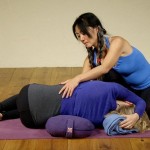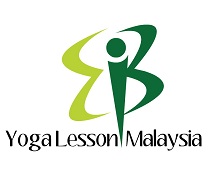Restorative Yoga for all levels
Restorative yoga is a reflexive method of yoga that uses blankets and bolsters to aid your body in releasing tension. This practice is planned to touch up the nervous system and assist to release intensely sustained tensions from the body and mind. In this practice props are used to support the postures, while softly strengthening and stretching the body. This class is suitable for students of all levels. Unlike more intense form of the yoga styles, such as Vinyasa, Iyengar, Ashtanga, and Bikram or hot yoga, restorative yoga does not highlight challenging balance poses or flowing body movements.
 At some point in a stressful time, we go a down with worked up so stiff that no amount of rest can discharge the tension in our muscles. We just need to move, nevertheless, we habitually undergo too exhausted for intense heart-pumping physical action. Auspiciously, yoga can rescue you, and you may often get the effects right away.
At some point in a stressful time, we go a down with worked up so stiff that no amount of rest can discharge the tension in our muscles. We just need to move, nevertheless, we habitually undergo too exhausted for intense heart-pumping physical action. Auspiciously, yoga can rescue you, and you may often get the effects right away.
In an idyllic world all asanas may sense restorative, however those that fall into the unique category of restorative poses have a precise ability to leave you nurtured and well rested. These asanas are typically greatly supported by blocks, blankets, or other props and are clutched for some minutes at a time.
Although restoratives classes sound peaceful, it can be testing for beginners. Just for the reason that the body rests in silence doesn’t mean the mind will patch up into quietness too. Be patient, with just a few guiding tips you may start a standard restorative practice of your own and can prepare yourself for days when every inch of you floats up.
Start your restorative yoga with few minutes of mild movement before moving into a restorative practice or pose. A touch of stretching will tepid the muscles and make space in the body to practice it for relaxation. Movement can also offer your body a chance to lean-to its busy-ness and restlessness before settling into a place of stillness.
![]() Take your time to get easy on your props and find time for any necessary adjustments before you settle in. In restoratives the gap between hell and heaven can be as little as half an inch. A minor shift in the body’s position or a little adjustment to a blanket can transform a moment of infuriated agony into pure ecstasy. Be innovative and utilize your inner astuteness to guide you toward better comfort.
Take your time to get easy on your props and find time for any necessary adjustments before you settle in. In restoratives the gap between hell and heaven can be as little as half an inch. A minor shift in the body’s position or a little adjustment to a blanket can transform a moment of infuriated agony into pure ecstasy. Be innovative and utilize your inner astuteness to guide you toward better comfort.
You can practice just one or two restorative postures in your daily routine, or you may decide to devote one complete practice each week.
Here are the names of 5 best poses which may help you to start with your yoga journey with restoratives.
Child’s or Balasana Pose
Balasana is a relaxing pose that can be categorized between more challenging asanas.
Benefits of Balasana pose
- Alleviates back and neck pain when completed with head and torso supported
- Relaxes the brain and facilitates relieve stress and fatigue
- Softly elongates the hips, ankles and thighs.
Legs-Up-the-Wall oar Viparita Karani Pose
Contemporary yogis have the same opinion that Viparita Karani has the power to heal whatever ails you.
Benefits of Vipatira Karani pose
- Softly elongates the back legs, back of the neck and the front torso.
- Mitigates fatigued or cramped legs and feet
- Reduces mild backache
- Relaxed the mind
Reclining Bound Angle or Supta Baddha Konasana Pose
It’s a traditional restorative posture that can be adapted for any level of hip and groin resistance.
Benefits of Supta Baddha Konasana pose
- Fires up abdominal organs like the prostate gland and ovaries, kidneys and bladder.
- Fires up the heart and enhances general circulation
- Elongates the knees, groins, and inner thighs.
- Facilitates to lessen the symptoms of mild depression, stress, menopause and menstruation.
Corpse or Savasana pose
It’s a pose of complete relaxation, making it one of the most difficult asanas.
Benefits of Savasana pose
- Relaxed the brain and aids to alleviate stress and mild depression
- lessens fatigue, headache, and insomnia
- Aids to lower blood pressure
- Lightens up the body
Reclining Big Toe or Supta Padangusthasana pose
This pose gives release from backache and elongates the calves, hips, and hamstrings.
Benefits of SuptaPadangusthasana pose
- Elongates thighs, hips, calves, groins, and hamstrings.
- Reinforces the knees
- Accelerates the prostate gland
- Makes better digestion
- Reduces sciatica, backache, and menstrual discomfort
- Beneficial for high blood pressure, infertility and flat feet.
So if you were waiting for the perfect time to learn more about Restorative Yoga, the time is now. Register with us and start learning today.
